Effective Strategies for Managing Brown Marmorated Stink Bugs
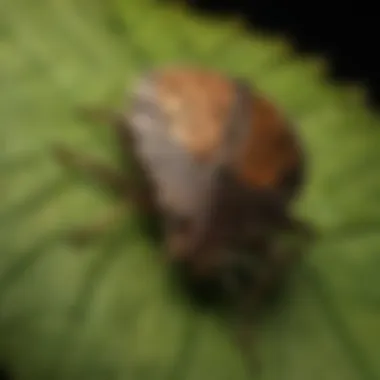
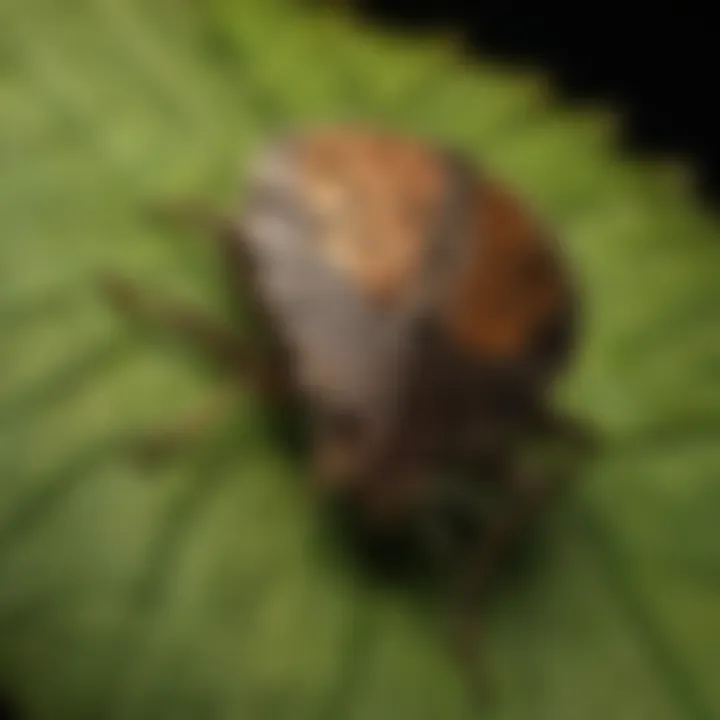
Intro
Brown marmorated stink bugs have found their way into homes across the United States and beyond, causing quite the stir among homeowners. These pesky little critters can wreak havoc on gardens, crops, and even the tranquility of your personal space. It’s essential to arm yourself with knowledge about these pests to manage and control them effectively. This article dives deep into understanding the brown marmorated stink bug, equipping you with strategies for identification, prevention, and treatment.
With the right information, you can keep your home pest-free, safeguarding not only your peace of mind but also the health of your household.
Pest Identification
Identifying a brown marmorated stink bug is the first step in effective control. They aren’t called stink bugs for nothing; they possess a unique odor that becomes apparent when disturbed or crushed.
Detailed descriptions of common pests
This species is typically around 1.7 cm in length and has a somewhat shield-like shape. The color tends to be a mix of brown and gray, speckled with white bands along the edges of their antennae and a distinctive pattern on their back that may remind folks of a quilt. The nymphs, or younger bugs, are bright red or orange and have black spots.
Signs and symptoms of infestations
If you notice a strong, unpleasant smell wafting through your home or find multiple pests congregating on windows or doors, that could be a sign of an infestation. Keep an eye out for:
- Bites on fruits and vegetables in your garden
- Shredded leaves as they feed on plants
- Presence of adult bugs and their nymphs clustered together
Monitoring for these signs will help you catch a potential infestation before it spirals out of control.
Prevention Strategies
Taking steps to prevent an invasion can save you from headaches later. Here are some techniques that are often overlooked but can be highly effective:
Home maintenance tips for pest prevention
- Seal entry points: Inspect doors, windows, and other openings for damage and seal gaps with caulk.
- Install screens: Place fine mesh screens on vents and windows to keep bugs out.
- Keep the surroundings clean: Figure out which scraps attract these stink bugs and clean up fallen fruits, vegetables, and debris from your yard to deter them from setting up camp.
Natural deterrents and barriers
If you're looking for non-chemical options to maintain your space pest-free, consider:
- Citrus peels or peppermint oil: Stink bugs have an aversion to strong scents like citrus or mint, so using these can naturally repel them.
- Diatomaceous earth: This natural substance can be sprinkled around gardens and entry points to deter pests without harming the environment.
Treatment Options
If prevention hasn't worked and stink bugs have invaded your space, it’s time to look at treatment options. Here’s a brief overview:
Overview of chemical vs. natural treatments
There’s a myriad of products out there, but options generally fall into two categories: chemical treatments and natural remedies. While chemical solutions can be highly effective, many are potentially harmful, so consider natural alternatives when possible.
Step-by-step guides for DIY treatments
For a natural remedy, create an effective soap solution. Mix a few drops of dish soap with water in a spray bottle and apply it directly onto the bugs. This mixture suffocates them, providing a straightforward solution to your stink bug problem.
Keeping an eye on your garden and being proactive can save you a world of trouble when it comes to managing brown marmorated stink bugs.
In sum, knowledge is power when it comes to tackling these invasive pests. By learning to identify them and implementing preventative measures, you're already a step ahead in the battle against brown marmorated stink bugs!
Educating yourself about treatment options, whether they stem from the chemical or natural realm, means you will be ready to react swiftly should the need arise.
This comprehensive approach allows you to maintain control without compromising safety and sustainability in your home.
Understanding the Brown Marmorated Stink Bug
Understanding the brown marmorated stink bug is a foundational step in effectively managing its presence. This invasive pest, native to East Asia, has made a significant impact on agriculture and home environments across the United States since its accidental introduction in the late 1990s. By comprehending the biological traits, life cycle, and behavior of this bug, homeowners can tailor their control strategies accordingly, allowing for a more proactive and informed approach.
Biological Characteristics
The brown marmorated stink bug is distinguishable by its shield-shaped body, which typically measures about half an inch long. Its color might vary from a greenish-brown to a brown hue, often featuring distinctive light bands on its antennae and a mottled appearance due to tiny white dots across its back. This camouflage allows it to blend seamlessly into its environment, making identification a challenge.
Interestingly, these bugs possess a thick exoskeleton that shields them from some environmental threats. However, they also produce a strong-smelling liquid when threatened, which can be quite unpleasant. This natural defense mechanism helps in deterring potential predators. Understanding these biological traits not only aids in recognizing the bug but also highlights its resilience and adaptability in different settings.
Life Cycle and Development
The life cycle of the brown marmorated stink bug is a fascinating journey, consisting of several stages: egg, nymph, and adult. The lifecycle typically begins in the spring when the female lays clusters of eggs—sometimes more than 300 at once—on the undersides of leaves.
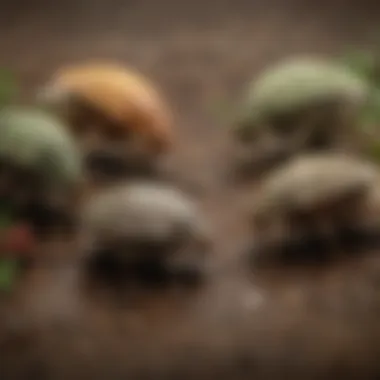

- Egg Stage: Eggs appear as tiny, light green or yellowish capsules, and within a week, they hatch into nymphs.
- Nymph Stage: Nymphs go through five instars, gradually acquiring more of their adult characteristics. During this period, they are particularly susceptible to environmental factors and predators.
- Adult Stage: Once they reach adulthood, they become active foragers, searching for food sources. They prefer fruits and vegetables but won’t shy away from ornamental plants as well.
These cycles typically repeat, with up to three generations in a year, depending on environmental conditions. This rapid reproduction can lead to alarming infestations if not managed effectively.
Behavioral Traits
Brown marmorated stink bugs exhibit behaviors that are not only interesting but also pertinent to their management. They are known for their gregarious nature; they tend to gather in large numbers, particularly in the late summer and fall as they prepare for overwintering. This clustering behavior means that finding one bug often leads to finding many more in close proximity.
Additionally, their feeding habits are worth noting—they utilize a straw-like mouthpart to pierce plant tissues and extract juices. This not only affects the plants' health but can also lead to discoloration and deformation of fruits and vegetables. Just like a thief in the night, they often invade homes looking for shelter, which adds to the household struggle.
Understanding these behavioral traits can empower homeowners to develop more effective management strategies, ensuring that they stay one step ahead of this clever invader.
Identifying Infestations
Identifying infestations of brown marmorated stink bugs is a crucial step in managing these home invaders. Early detection can help prevent a small problem from spiraling into a full-blown infestation. Understanding how to spot the signs of their presence and knowing their preferred hiding locations can save you from a lot of headaches down the line. It’s not just about finding them inside; it's also about monitoring your garden and property to keep them at bay. The more knowledge you have about these bugs, the better equipped you will be to fight them off.
Signs of Infestation
Recognizing the signs that stink bugs have made themselves at home in your abode is essential. A few common indicators include:
- Visible Bugs: Seeing two or more brown marmorated stink bugs indoors is often a sign of a problem. They tend to gather in small groups, especially near windows or vents.
- Foul Odor: These bugs excrete a pungent smell when disturbed. If you detect an unusual odor, it might be time to investigate further.
- Damage to Plants: If your gardens or indoor plants are wilting or producing scars on their leaves, this might indicate stink bug feeding. The sap-sucking behavior can harm the plants over time.
"An ounce of prevention is worth a pound of cure." Being vigilant can save significant trouble later.
Common Hiding Spots
Brown marmorated stink bugs love to find warm, sheltered spots to hide. Targeting these areas for inspection can increase your chances of catching them early. Common hiding spots include:
- Cracks and Crevices: Pay close attention to any gaps in windows, doors, and siding. These are prime entry points for them to slip into your home.
- Underneath Furniture: They often seek refuge in the warmth of home furnishings, so looking beneath couches and beds can be revealing.
- Attics and Basements: These are quiet areas that provide the darkness and calm they enjoy, making them ideal hiding spots.
Differentiating from Other Pests
Not all pests that creep into our homes are the same, and distinguishing brown marmorated stink bugs from their counterparts can be tricky. Here are a few tips:
- Shape and Size: Typically, they are shield-shaped and about 3/4 inch long. Their distinctive brown color, marked with lighter bands on their antennae, helps set them apart.
- Presence of Odor: Many bugs don't have a noticeable scent when disturbed, unlike stink bugs, which release a strong smell.
- Feeding Habits: When examining your plants, if you notice a few bugs sucking the sap and yellowing leaves, you're likely facing a stink bug infestation rather than some other pest grabbing a munch.
Being proactive in recognizing these signs can make a world of difference. Taking action early on can save time, money, and peace of mind. Be on the lookout, and you'll be one step closer to keeping your living space bug-free.
Environmental Impact
Understanding the consequences of the brown marmorated stink bug (BMSB) on our environment is crucial, especially as its invasiveness continues to expand. These critters may seem harmless in an aesthetic sense, but their impact can reverberate across various facets of agriculture and ecosystems. The loss they bring cannot be overlooked, and that piques the interest of both homeowners and those residing in rural areas.
Implications for Agriculture
The agricultural sector faces significant challenges due to the brown marmorated stink bug. These pests are notorious for their ability to damage a wide variety of crops, thereby affecting the agricultural economy. Farmers often find themselves in a tight spot, as fields full of crops such as apples, peaches, and tomatoes become their playground. The BMSB feeds primarily on the sap of these plants, which can lead to observable defects such as deformities, premature dropping of fruit, and overall diminished yield.
- Financial Effects: Damage caused by BMSB can result in loss of revenue for farmers, which can trickle down to consumers in the form of higher prices. Indeed, the cost of pest control measures adds yet another layer to this financial burden.
- Shift in Crop Management: As these stink bugs commandeer fields, farmers may need to adjust their management strategies and practices. This could mean investing in additional protective measures or altering planting schedules to avoid peak infestation times.
- Integrated Pest Management (IPM): To grapple with their impact, some agricultural specialists have begun to adopt IPM strategies. This includes combining natural predators and organic pest control methods to mitigate damage while preserving the ecosystem.
With all these pressing issues, farmers may often feel like they are fighting an uphill battle against an unseen adversary, struggling to keep their crops in shape and fend off the looming financial repercussions.
Effects on Ecosystems
The effect of brown marmorated stink bugs extends beyond just agricultural concerns; it hands over ramifications to the broader ecosystem too. As they infiltrate various habitats, they can upset the delicate balance of local flora and fauna. By targeting native plant life and consuming resources meant for other species, the BMSB can complicate the food web.
- Disruption of Native Species: As the BMSB settles into new environments, they often outcompete native species for food and habitat, leading to a decline in those populations. This could disturb natural balances that have existed for centuries. For instance, certain birds and insects that rely on native plants may find it challenging to thrive, potentially reducing biodiversity.
- Secondary Effects: The changes triggered by BMSB might lead to the emergence of new pests. With native populations dwindling, other pest species could take advantage of the disruption, creating a ripple effect that complicates matters further.
- Ecological Integrity: The introduction and establishment of these pests can threaten ecological integrity, forcing ecosystems to adapt in ways that may not be sustainable in the long run.
In summary, the brown marmorated stink bug represents a deeper environmental concern than many initially perceive. From economics that directly affect farmers to more systemic impacts on ecosystems, their presence carries numerous implications that extend beyond a mere inconvenience. Recognizing and managing these impacts is essential to preserving both agricultural productivity and ecological health.
Preventative Measures
Preventative measures lie at the heart of effective control strategies when dealing with brown marmorated stink bugs. By focusing on prevention, homeowners can minimize the chances of infestations before they even start. A proactive approach not only reduces the cost associated with implementing control methods later but also enhances peace of mind. These measures, although requiring some initial effort, can yield significant long-term benefits and contribute towards a healthy living environment.
Home Maintenance Practices
Sealing Entry Points
Sealing entry points is a fundamental practice that plays a crucial role in keeping brown marmorated stink bugs at bay. A key characteristic of this method is its focus on blocking potential entrances to your home, particularly during critical infestation periods in late summer and fall. By employing materials such as caulk, weather-stripping, and door sweeps, you can effectively create an impenetrable barrier against these intruders.
The unique feature of sealing entry points is its straightforwardness. Unlike some control strategies that can take time to implement or require professional assistance, most homeowners can accomplish this task themselves with minimal tools. The advantages are clear: not only does it help in preventing stink bugs, but it also wards off other pests while enhancing energy efficiency. On the downside, one must remain vigilant; if gaps reappear or if the materials degrade over time, the effectiveness of this barrier can diminish rapidly.
Proper Ventilation
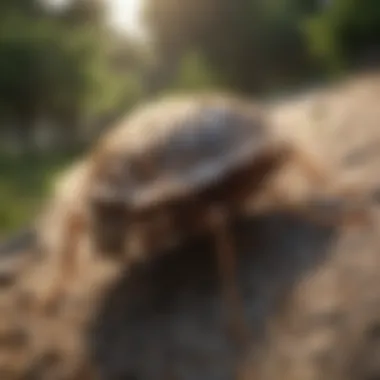
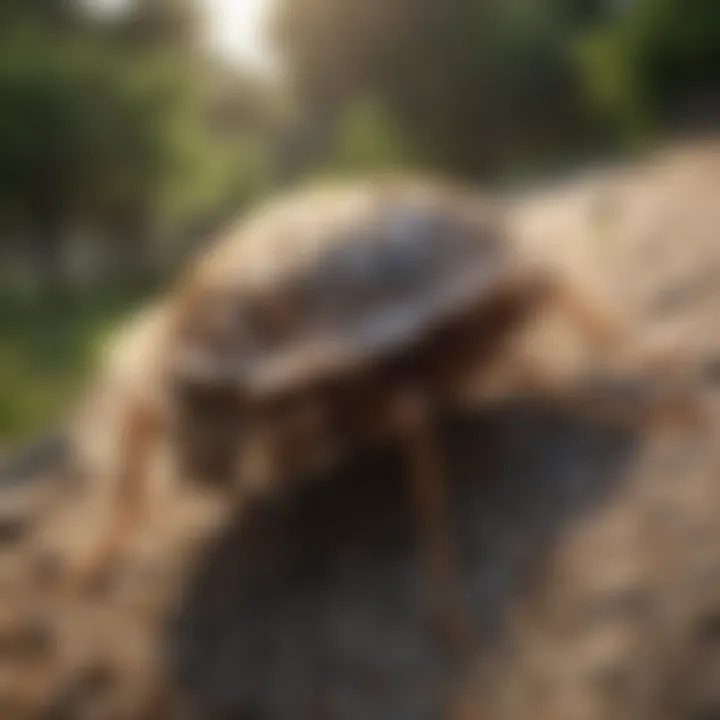
Proper ventilation is another essential aspect of home maintenance that contributes to stink bug prevention. Good ventilation helps to maintain indoor air quality and reduce humidity levels, which can deter infestations. Stink bugs prefer warm and humid environments, thus keeping your home well-ventilated makes it less hospitable.
The key characteristic of this practice is its dual purpose: while it limits pest attraction, it simultaneously improves comfort and reduces energy costs. Homeowners should consider using exhaust fans in kitchens and bathrooms and opening windows on cooler days to circulate air. A unique feature of proper ventilation is its contribution to overall home health, reducing the chance of mold growth. However, in colder months, it can be tough to balance warmth and airflow without inviting thermal discomfort.
Landscaping Considerations
Landscaping considerations contribute significantly to pest control efforts. The way you maintain your yard can either attract or repel brown marmorated stink bugs. Plants that bear fruits and vegetables tend to draw these pests like a moth to a flame. Hence, it's pivotal to select your plants wisely and keep them in check with regular maintenance.
A key characteristic of strategic landscaping is the introduction of pest-repellent plants, such as marigolds or mint, alongside proper spacing of common crops. This not only beautifies your space but serves as a natural barrier against stink bugs. The unique feature of these considerations lies in their preventative outlook—by modifying the landscape, homeowners can drastically reduce the likelihood of invasion. However, it does take dedication to maintain an aesthetically pleasing yard while being strategically defensive, which might not be feasible for everyone.
Landscape Management
Landscape management plays a pivotal role in the larger scheme of stink bug control. It's about creating an environment that is less favorable to these pests while promoting biodiversity. Simple practices like removing any debris, fallen fruits, and overgrown areas can make a world of difference. Stink bugs love cluttered spaces and unattended gardens; by managing these factors, you keep them guessing.
A beneficial approach in landscape management includes implementing a routine that involves assessing your yard seasonally. This way, adjustments can be made timely. Additionally, using physical barriers such as mesh nets or row covers on vulnerable plants can prevent them from turning into hubs for stink bug activity.
Finally, understanding the local ecosystem and working with it plays into effective landscape management. Additionally, the community can benefit from shared practices, perhaps even collaborating through local gardening groups or forums to exchange knowledge and resources. With a little bit of effort, you can help ensure that your garden remains a sanctuary rather than a stronghold for pests like the brown marmorated stink bug.
Effective Control Techniques
Controlling the brown marmorated stink bug is not just about getting rid of them but also creating an environment where they are less likely to thrive. Effective control techniques are the linchpin of any pest management strategy, serving multiple roles from prevention to remediation. Homeowners and pest control experts alike benefit from knowing the best methods available to manage these pests. The importance lies in combining various approaches—natural and chemical—thereby maximizing the chance of success while minimizing risks to health and the environment.
Natural Remedies
Essential Oils
Essential oils are often hailed as a natural remedy for pest control, and the brown marmorated stink bug is no exception. The key characteristics of essential oils are their potent aromatic compounds and organic nature. Oils such as peppermint, clove, and neem are often mentioned in discussions about natural solutions to pest problems. These oils not only mask the scent that stink bugs use to navigate their surroundings but also can disrupt their reproductive cycles.
One unique feature of essential oils is their ability to repel insects—more so than many chemical alternatives. This makes them a popular choice for homeowners looking for eco-friendly options. However, they do present some disadvantages. Essential oils typically need to be applied regularly to maintain effectiveness as they can dissipate quickly. Therefore, users must balance the benefits with the commitment to frequent application.
Homemade Traps
Creating homemade traps is a practical and often cost-effective method for managing stink bug populations. The beauty of homemade traps is their flexibility; you can tailor them to your particular circumstances—whether it’s using simple soap and water traps or constructing a bait station using fruit. The process often involves items readily at hand, making it a beneficial strategy for those who prefer DIY methods.
A unique feature of homemade traps is their ability to catch bugs without requiring toxic chemicals. This could be a major draw for families and environmentally conscious individuals. While they can prove effective, there are challenges: traps need to be monitored and emptied regularly to be truly effective, or else their success can wane.
Chemical Control Options
Targeted Insecticides
For situations where natural methods do not suffice, targeted insecticides can provide a powerful tool against brown marmorated stink bugs. These insecticides are specifically formulated to eliminate stink bugs while causing minimal harm to beneficial insects. A major benefit is their speed and effectiveness; results can often be seen within hours to days of application.
However, it's crucial to understand the unique features of these chemicals. They often come with specific application guidelines that must be followed to avoid potential health risks. Additionally, while targeted insecticides are generally more responsible in their approach compared to broad-spectrum options, they still pose risks to certain non-target organisms. Therefore, the challenge is to use them judiciously as part of an integrated pest management strategy.
Safety Precautions
Implementing safety precautions is imperative when using any chemical control methods. The key here is understanding how to apply products safely while minimizing exposure to both people and pets. Choosing low-risk pesticides and following manufacturer guidelines are essential in this regard.
A defining characteristic of safety precautions is their dual purpose: they protect the user during application and safeguard the environment post-application. This is particularly advantageous when the goal is to combat stink bugs without detriment to other wildlife or household members. However, users should not overlook the details; if precautions are neglected, the very benefits expected from chemical controls could devolve into serious challenges, including health risks or environmental damage.
Effective pest management mixes both natural and chemical methods to create a holistic approach.
Combating brown marmorated stink bugs involves various techniques. Each method has its pros and cons, tailored to suit specific situations. By employing the right combination, homeowners can conquer these nuisances and reclaim their spaces.
Monitoring and Evaluation
Monitoring and evaluation stand at the forefront of effectively managing the brown marmorated stink bug infestation. It’s crucial not only for gauging the success of control methods but also for making informed decisions in real-time. A comprehensive approach to monitoring helps in diagnosing the severity of infestations while evaluating the steps taken ensures that strategies remain adaptable. Homeowners and pest control experts alike can benefit from a structured monitoring plan.
By keeping tabs on these pests, individuals can gain insights into their population dynamics and behavioral patterns. This means knowing when these bugs are most active, understanding their movement across your property, and discerning how many are slipping through the cracks despite your best efforts. Monitoring allows for a proactive approach – you can catch potential re-infestations before they spiral out of control, saving both time and money.
Tracking Effectiveness
The primary goal of tracking effectiveness is to see if your pest control measures are creating a dent in the stink bug population. This involves regularly checking for signs of the bugs, such as their presence on plants or dead bugs trapped in homemade traps. A simple checklist can greatly assist in this phase. You might consider the following:
- Weekly inspections of potential breeding sites, such as under leaves or along house foundations
- Monitoring natural hazards, such as whether any infestations are occurring in neighboring yards
- Record-keeping for the number of bugs caught in traps or spotted during inspections
These tracking methods establish a clearer picture of the effectiveness of your current strategies. It also provides data to determine whether further changes or interventions are needed. The reports you compile should detail not just the number of bugs but also factors like weather conditions and plant health, as these can influence stink bug activity. By keeping an eye on these details, you'll have a firmer grasp on what’s working and what’s not.
Adjusting Strategies
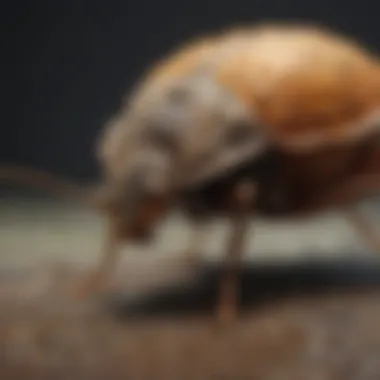
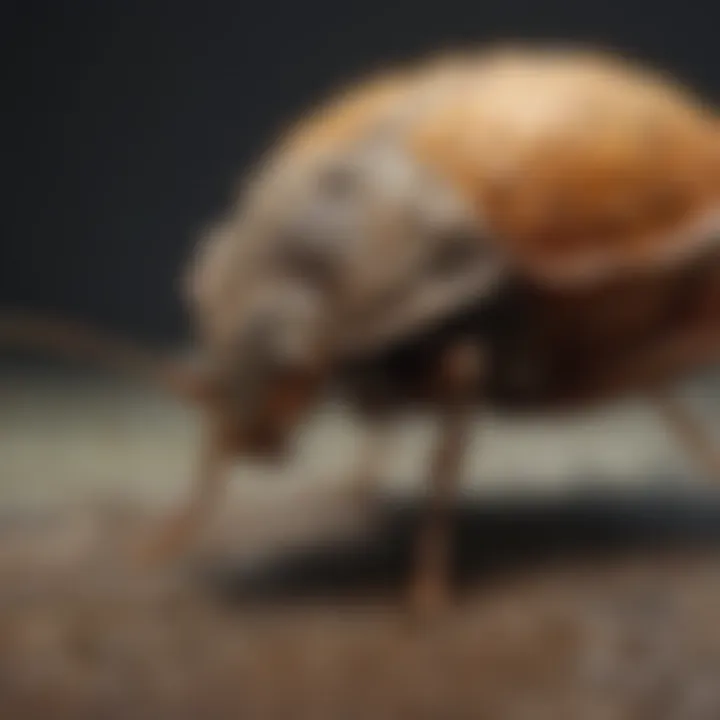
Adjusting strategies based on your tracking results is the next logical step in the management process. If you notice that certain methods are yielding little to no results, it could very well be time to rethink your approach. Adaptability is key – what works well for one person’s property may not yield the same results on another.
Consider these practical adjustments:
- Change trap locations if monitoring shows minimal catch rates. Sometimes, a small move can make a world of difference.
- Explore different control measures like switching from essential oils to targeted insecticides if natural remedies don’t seem to contain the problem.
- Seasonal adjustments; since stink bugs behave differently depending on the time of year, revisiting methods intentionally based on seasonal patterns can help manage their presence more effectively.
Monitoring isn't merely about what has been accomplished; it’s about being willing to adapt, rethink, and recalibrate plans. Staying flexible and adopting these changes can lead to a healthier home environment, reducing not only brown marmorated stink bugs but also the associated stress of potential infestations.
"The only constant in pest management is change itself. Adaptability is not just an option; it’s a necessity."
Ultimately, the ongoing process of monitoring and evaluation empowers homeowners. It ensures that you're not stuck in a one-size-fits-all strategy but instead are tailoring your approach to the unique set of circumstances in your immediate environment. By remaining vigilant and responsive, you hold the reins in the fight against these pesky intruders.
Professional Assistance
Dealing with brown marmorated stink bugs can be a real headache, especially when infestations grow out of control. This is where professional assistance comes into play, providing expertise and tools that most homeowners simply don't have. Relying on professionals not only saves time but also increases the chance of effectively eliminating these pests from your home.
When to Call an Exterminator
It's essential to know when the situation calls for a professional's help. Here are some signs to consider:
- Size of the Infestation: If you're noticing dozens or even hundreds of stink bugs making your home their resting place, it might be time to call in the cavalry.
- Repeated Attempts at DIY Control: You've tried every trick in the book, from using essential oils to homemade traps, but they keep returning. We can't fight 'em all, and sometimes, it's best to let a pro handle it.
- Assessment of Damage: If stink bugs are damaging your plants or property, particularly during the summer months, you’ll want to act fast to prevent further harm.
- Health Concerns: Though stink bugs are relatively harmless to humans, hefty infestations can create stress and discomfort within the home. If you feel overwhelmed, don’t hesitate to reach out for help.
Don't wait until it's too late. If these indicators sound all too familiar, contact a pest control expert soon.
Choosing the Right Pest Control Service
When you've decided it's time to enlist help, it's crucial to choose the right pest control service. Here are some pointers to guide you through this important decision:
- Research Local Options: Look for services within your community by investigating online reviews and asking friends or family for recommendations. A company with a good reputation is worth its weight in gold.
- Check Credentials: Ensure the pest control service is licensed and insured. This protects you and assures that the professionals are equipped with the right knowledge.
- Inquire About Methods: Not all pest control services are the same. Be sure to ask about the methods they use, especially if you have young kids or pets at home. Eco-friendly methods should be a priority.
- Get an Estimate: Costs can vary, so obtain quotes from 2 to 3 different services. Avoid falling for deals that seem too good to be true; quality should always be considered with the price.
- Review Contracts Carefully: Always read the fine print in any contract. Ensure you are aware of what services are included and any follow-up visits that may be necessary.
"The right partner can make all the difference when it comes to tackling a pest issue. Don’t hesitate to seek professional help if needed."
Taking the time to research and choose the right pest control service will leave you feeling more confident in your approach to managing brown marmorated stink bugs.
By following these guidelines, homeowners can gain insight into when and how to effectively engage with professionals in the pest control industry.
Myths and Misconceptions
Understanding the various myths and misconceptions surrounding brown marmorated stink bugs is crucial for effective pest management. Many homeowners have misbeliefs about these pesky critters that can lead to ineffective control measures and heightened frustration. By clarifying these misconceptions, we can better equip ourselves with knowledge that fosters more effective strategies and informed decisions when facing infestations.
Common Misbeliefs About Stink Bugs
Here are some widely held, yet incorrect, beliefs about brown marmorated stink bugs:
- They cause significant damage to homes. Many people think stink bugs are a major threat to structural integrity or other household items. In truth, while their presence in large numbers is annoying and can lead to minor damages, they do not cause severe harm to buildings.
- All pest solutions work equally well. Some homeowners believe that any pest control technique will suffice against stink bugs. This is not the case; their unique biology and behavior require specific approaches that are tailored to them and won’t be effective if generalized.
- They are only an issue in fall. While stink bugs tend to appear in large numbers during the autumn months, they can be a problem at any time of the year. Misjudging when they might invade can lead to disasters when they unexpectedly show up in spring or summer.
"A stitch in time saves nine." This saying perfectly highlights how addressing stink bug infestations early is better than scrambling when they’ve taken hold.
- They are harmless to pets. Some homeowners might think that stink bugs pose no threat to their pets. However, curious dogs and cats can have adverse reactions if they consume these bugs, leading to potential digestive upset.
By dispelling these myths, we can address stink bug invasions more effectively.
Debunking Control Techniques
Just as there are common misconceptions about the nature of brown marmorated stink bugs, there are also flawed beliefs surrounding control techniques:
- Hot water kills them. Many folks believe pouring hot water on stink bugs will effectively eliminate them. This method may kill some bugs but can also lead to staining or damaging surfaces in your home. A targeted approach is safer and more effective.
- Spraying vinegar will repel them. While vinegar is a popular cleaning solution, its effectiveness as a repellent is overstated. Stink bugs may not be deterred by vinegar compared to other more potent options like essential oils.
- Traps are a one-stop solution. Traps can be useful tools in a broader strategy for managing stink bugs; however, relying solely on traps is typically a mistake. They should complement other methods rather than serve as the primary means of control.
- Once they’re in, it’s too late. A common belief is that if stink bugs have invaded your home, the situation is hopeless. While it can be challenging to eradicate them completely once they’re inside, there are still effective strategies available to reduce their numbers.
Many of these misconceptions stem from misunderstandings of the stink bug’s behavior and characteristics. Recognizing and addressing these myths helps in crafting a clearer view of how to manage and control these pests effectively.
Finale
As we wrap up this comprehensive examination of brown marmorated stink bug management, it's crucial to recognize the breadth of strategies that homeowners and pest control professionals can wield against these persistent pests. The conclusion is not merely a summary; it's about emphasizing the importance of a multi-faceted approach in tackling infestations effectively.
Recap of Control Strategies
In the battle against brown marmorated stink bugs, several key strategies stand out:
- Identification: Understanding how to identify these pests is paramount. Distinctive markings and behaviors can guide you in spotting them before they become a problem.
- Preventative Measures: Sealing entry points and maintaining clean surroundings are not just good practices but essential lines of defense. Regularly inspect windows, doors, and vents for potential gaps.
- Effective Control Techniques: Both natural remedies, such as essential oils or homemade traps, and chemical solutions have their place in an effective management plan. Each option should be weighed carefully regarding safety and environmental impact.
- Monitoring and Evaluation: Regular checks and adaptation of strategies can ensure that your efforts remain effective. Keep a look out for new signs of infestation, as the situation can change seasonally.
- Professional Assistance: Knowing when to call in the experts can save time and eliminate the scourge more effectively. They have access to tools and treatments that might not be readily available for the average homeowner.
By following these control strategies, you can significantly diminish the nuisance posed by these bugs, thereby protecting your home and maintaining your peace of mind.
Future Considerations
Looking ahead, understanding the ongoing nature of pest control is vital. As climate change and urbanization continue to alter ecosystems, the behavior of pests can shift as well. Here are some considerations for the future:
- Research and Development: Stay informed about new research in pest management. Novel control methods, such as biocontrol agents or advances in chemical formulations, may come to the fore.
- Sustainable Practices: Emphasizing eco-friendly strategies ought to be at the forefront of our pest control efforts. Consider investigating environmentally conscious pest management practices that can be integrated into your existing plans.
- Community Involvement: Engage with local communities to share experiences and strategies. Online forums such as Reddit or social media groups, like those on Facebook, can prove invaluable for exchanging tips and tricks.
- Policy Changes: Keep abreast of any changes in regulations regarding pest control practices. These can affect product availability or permissible treatment options.



